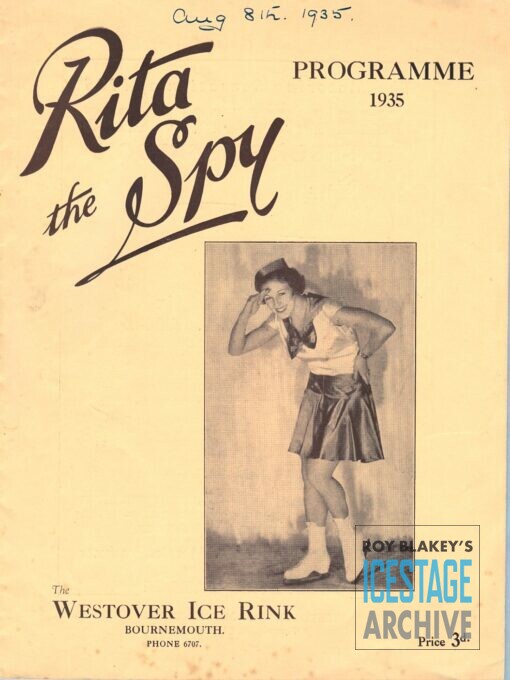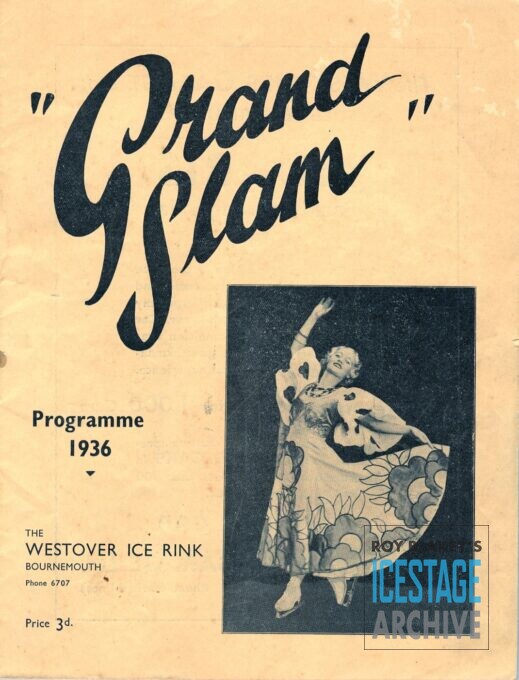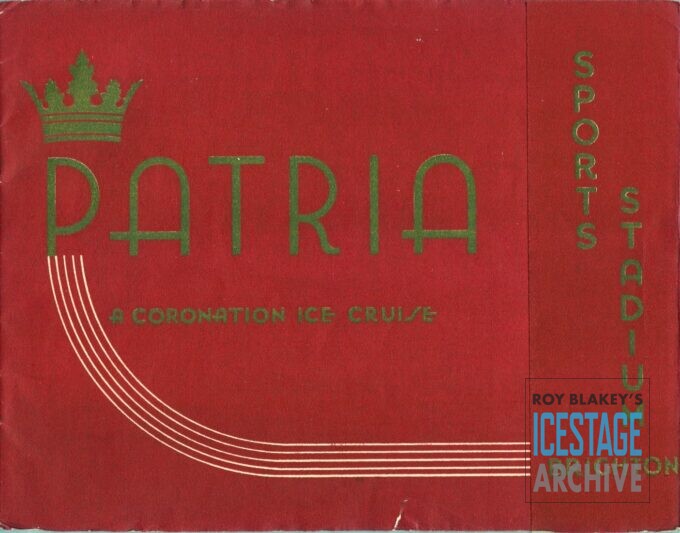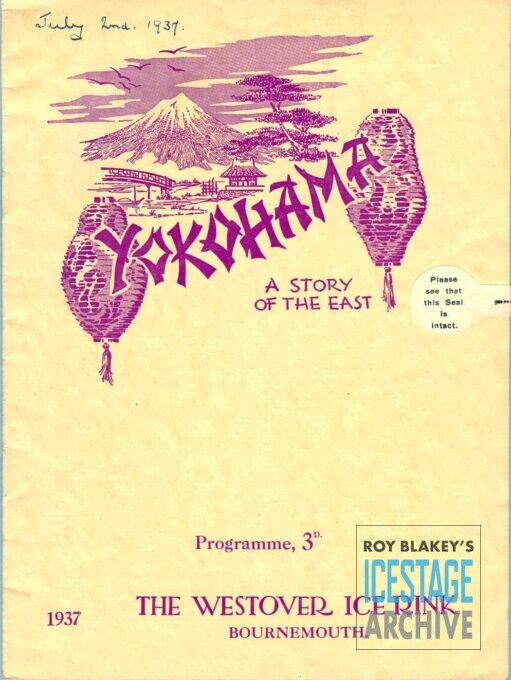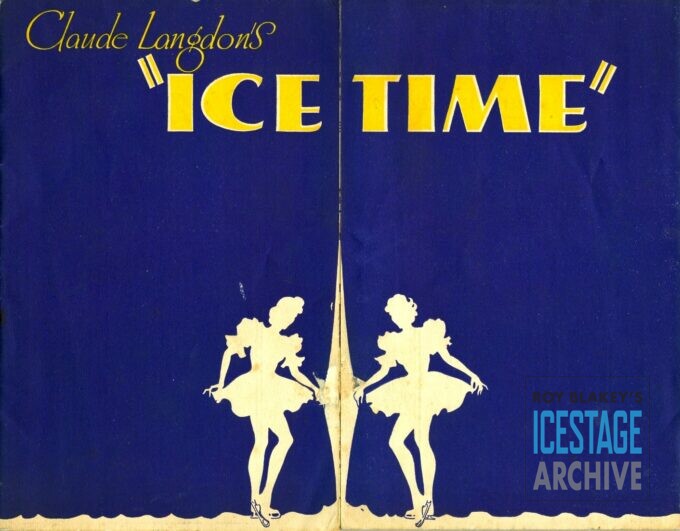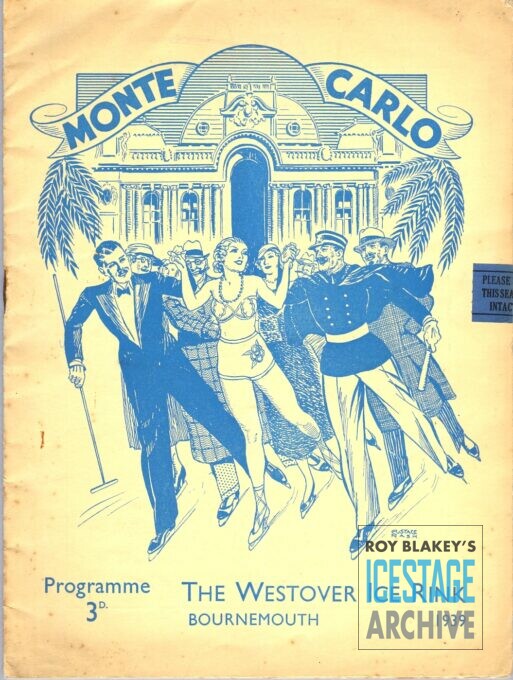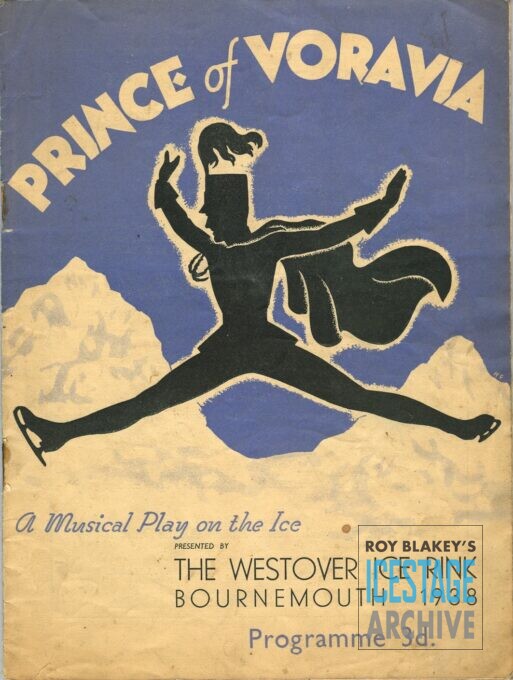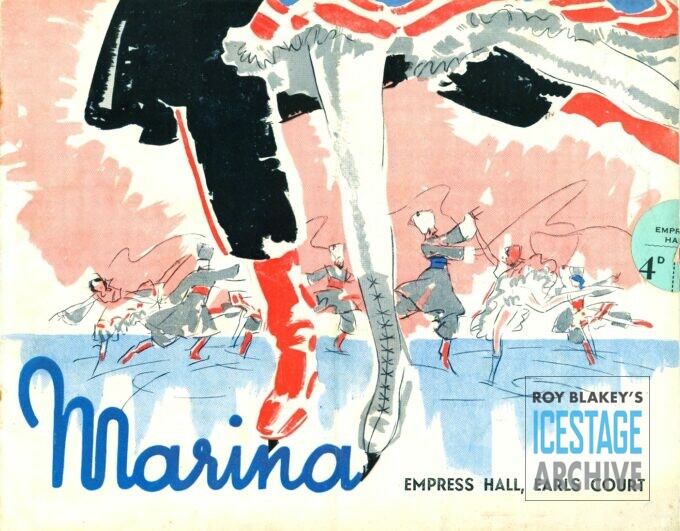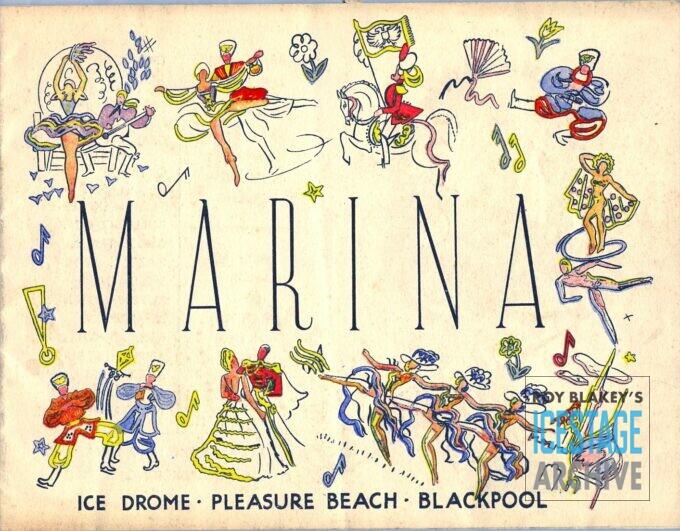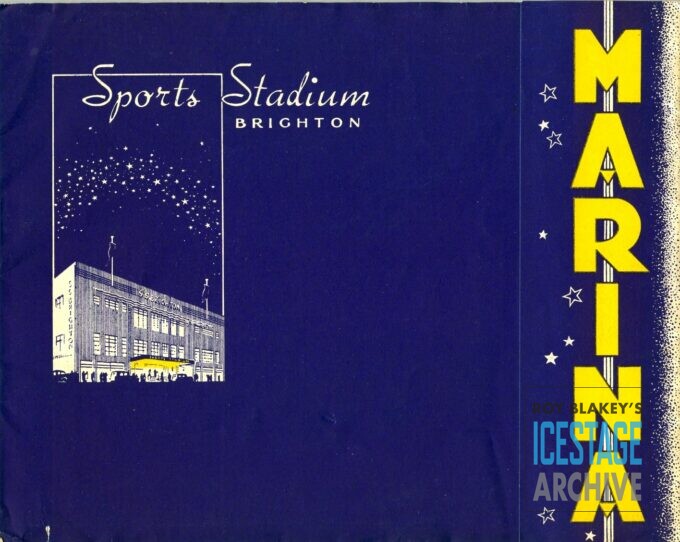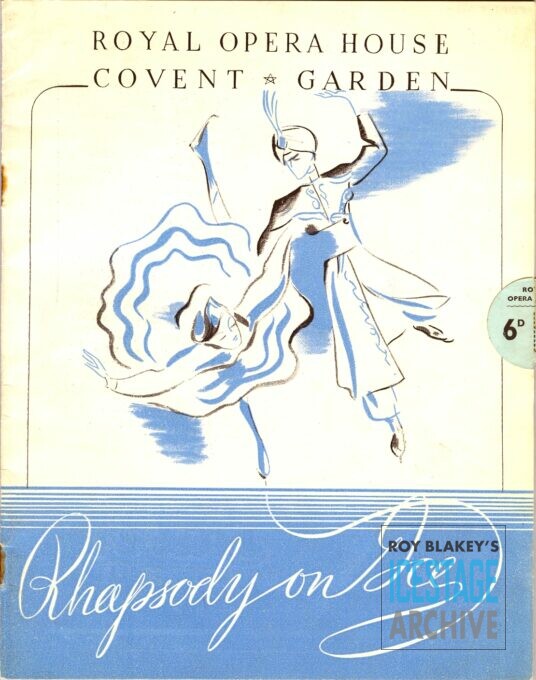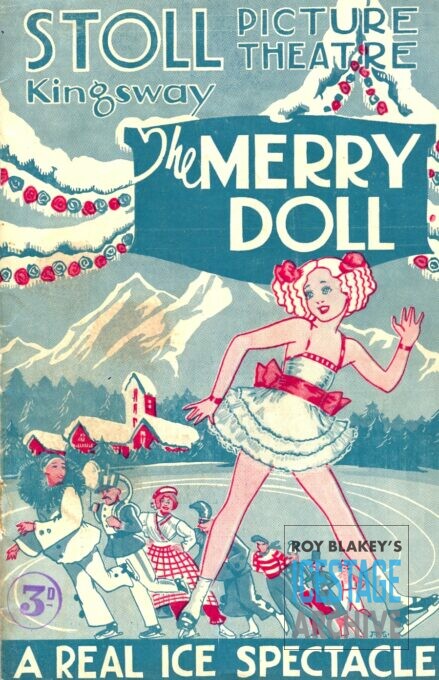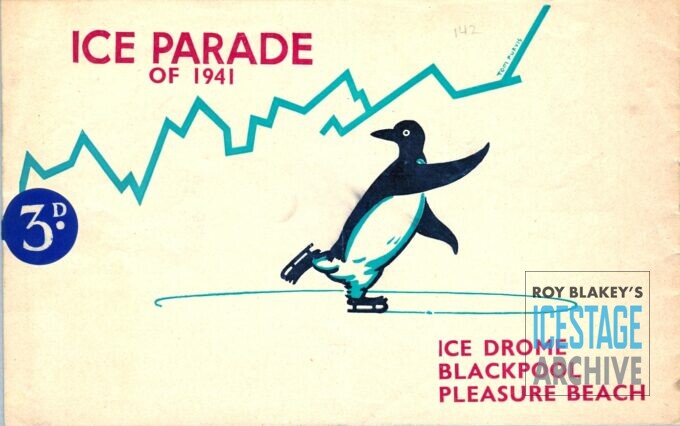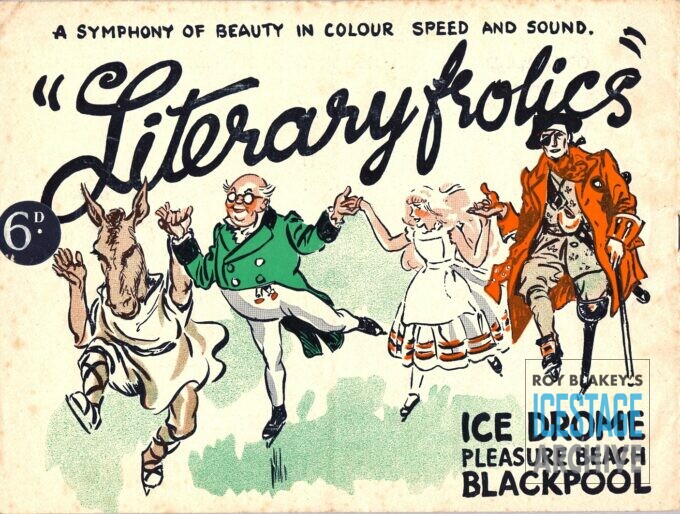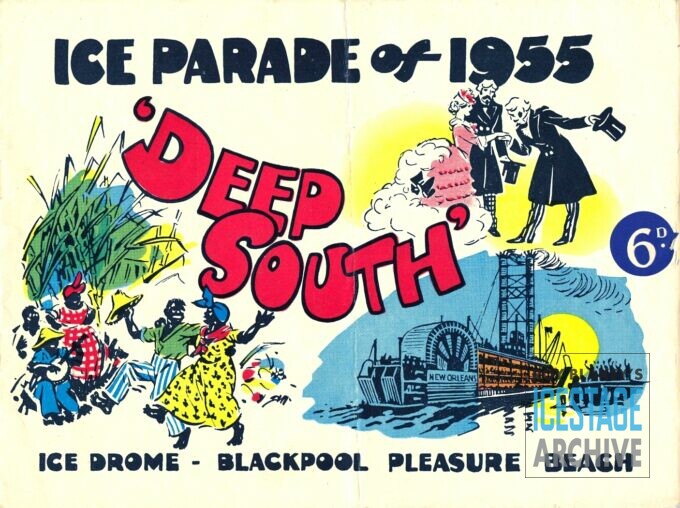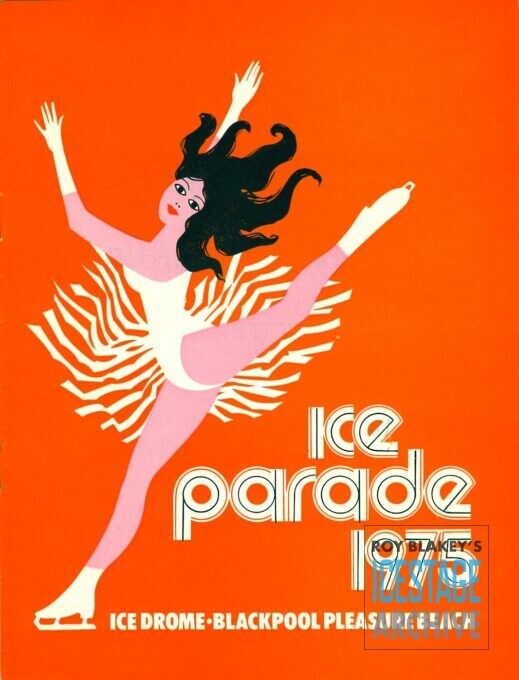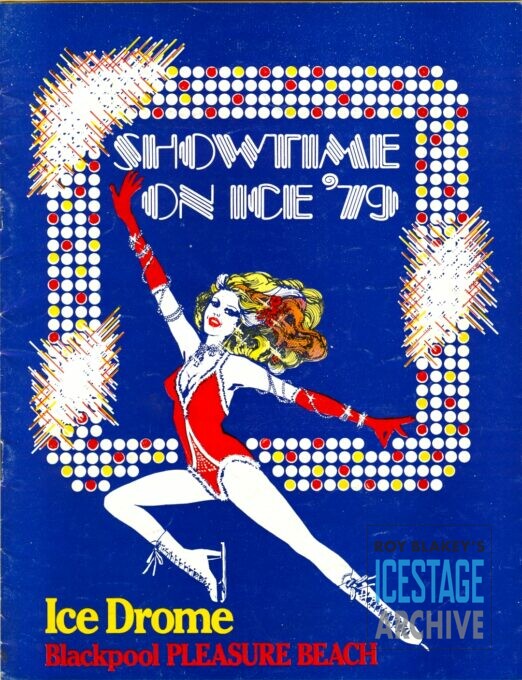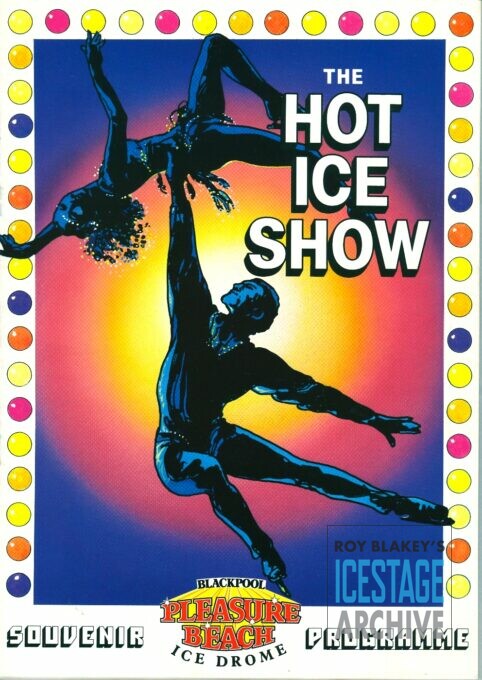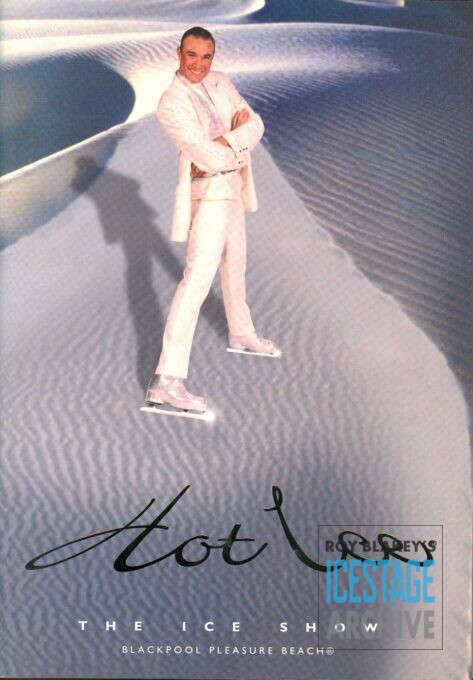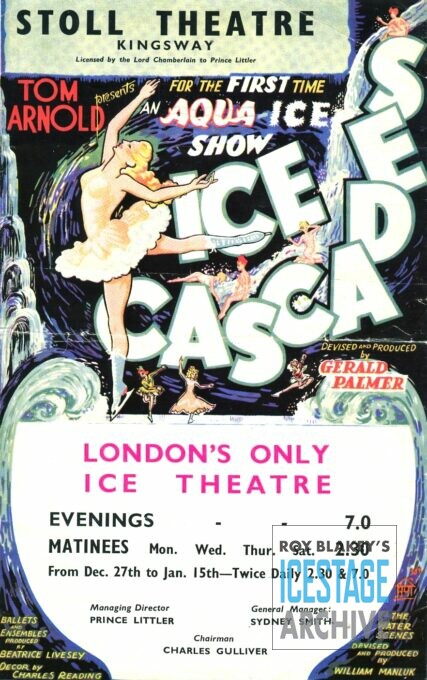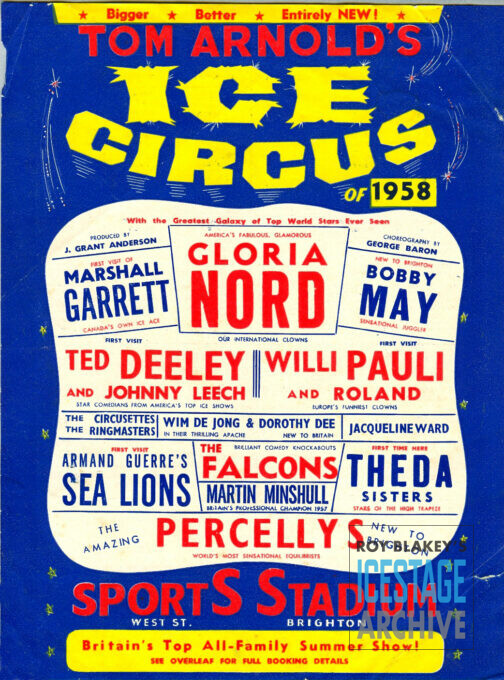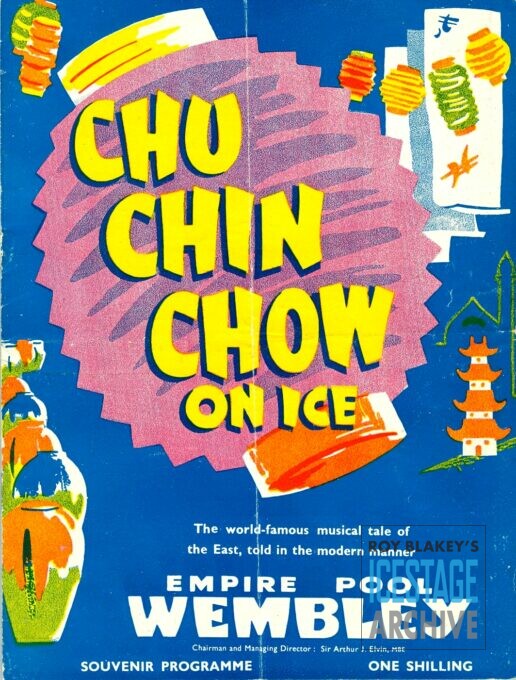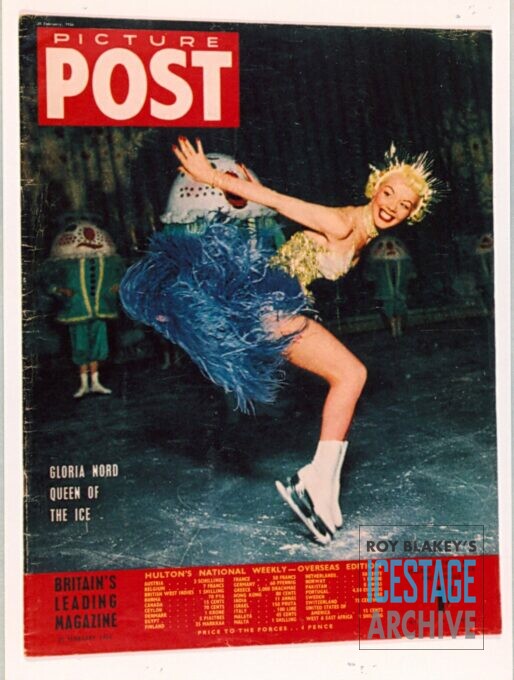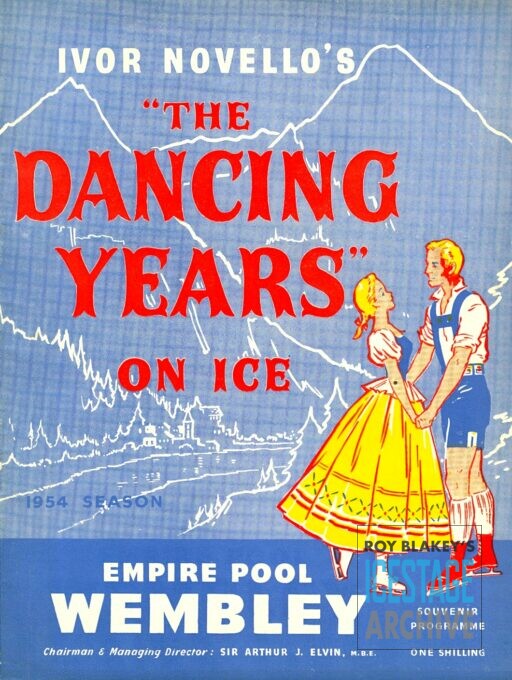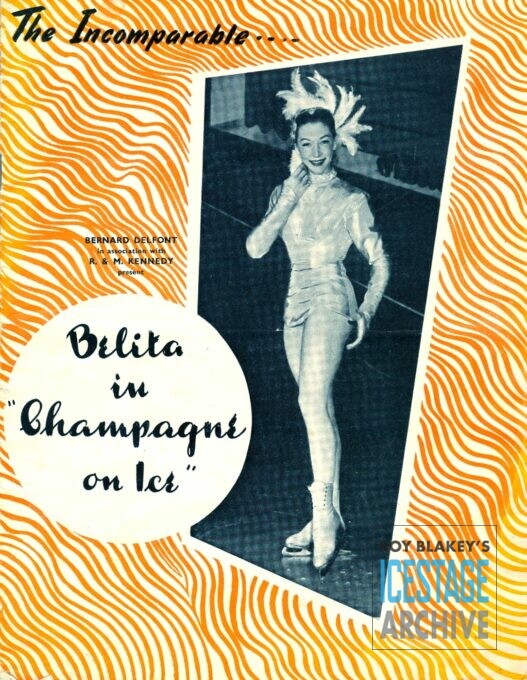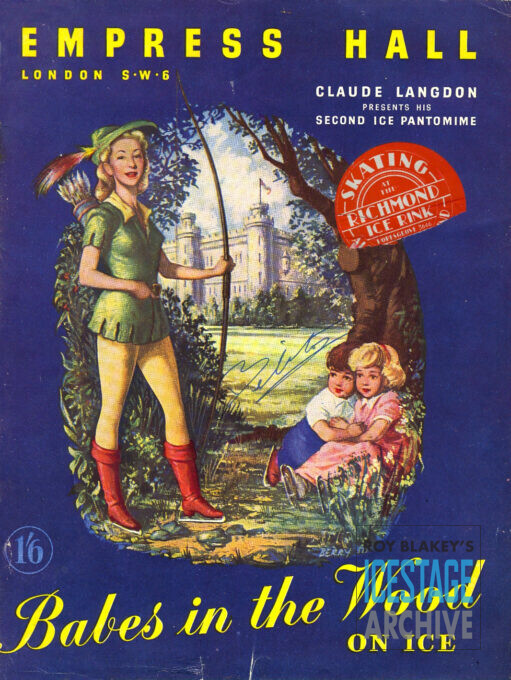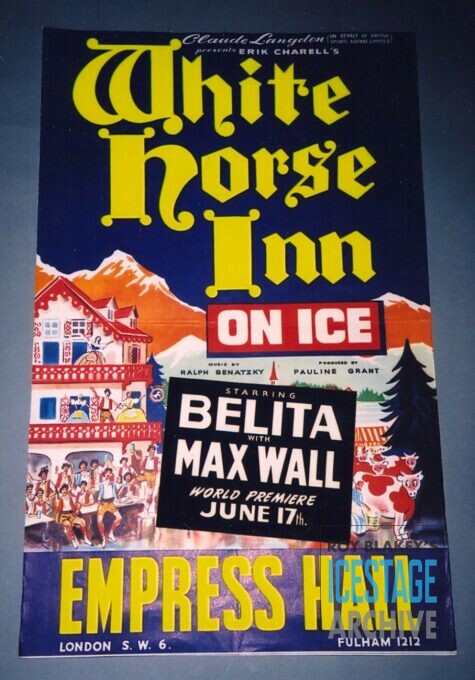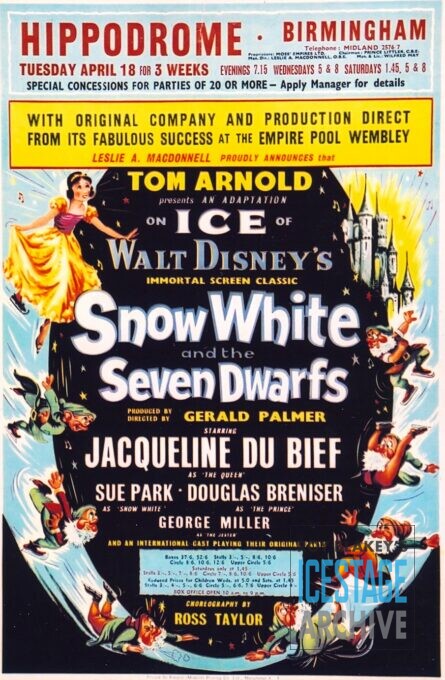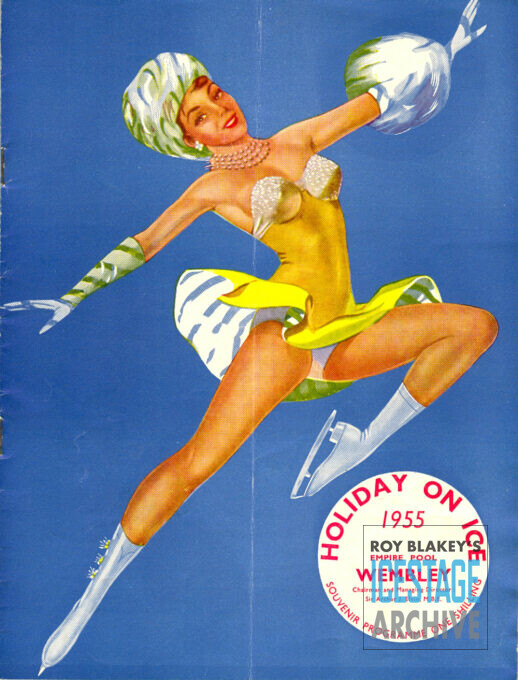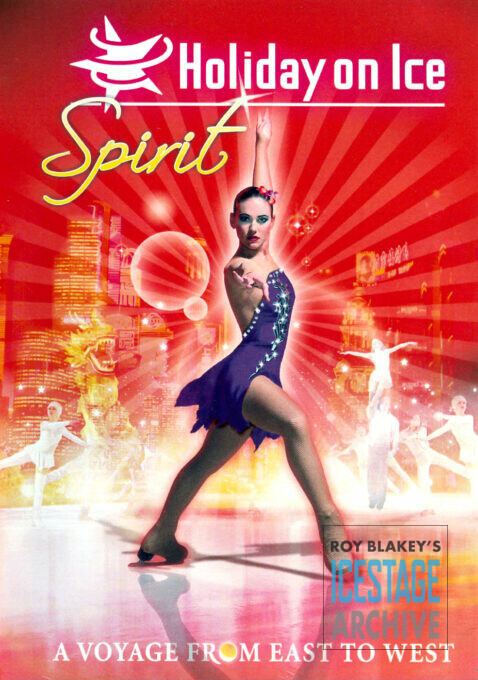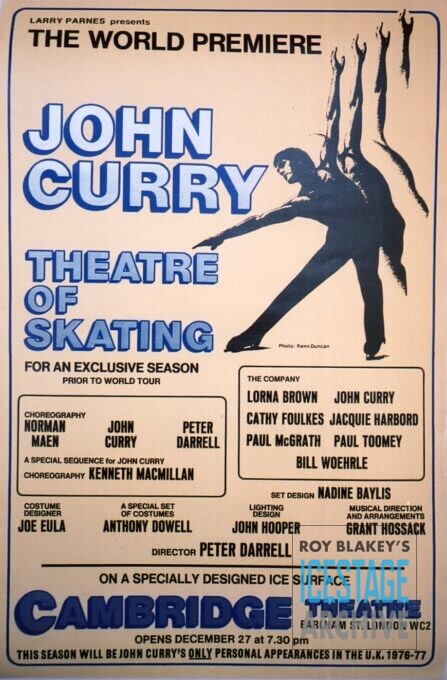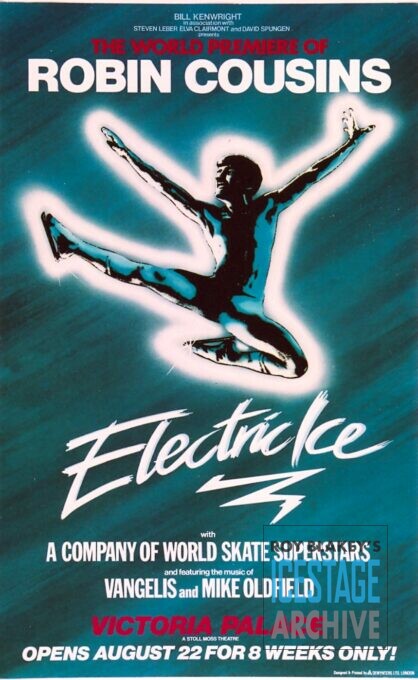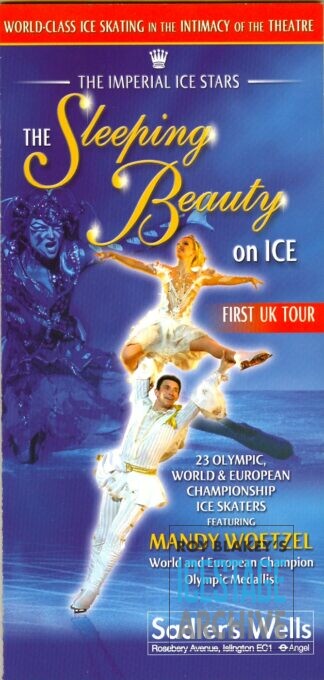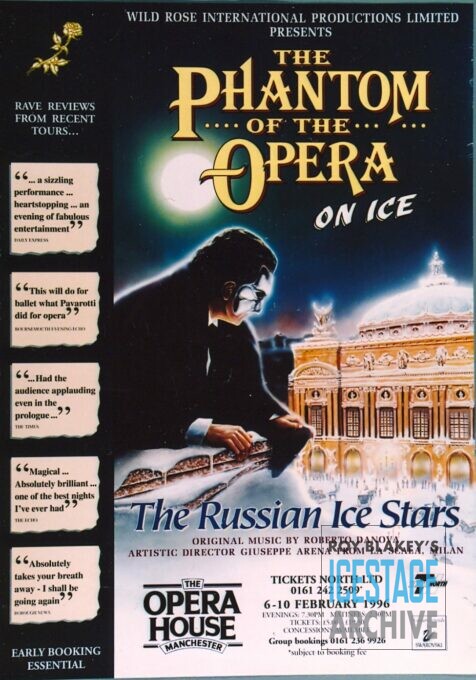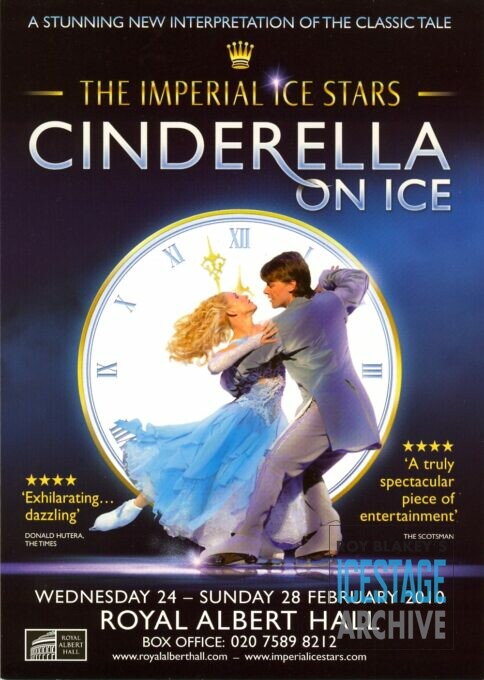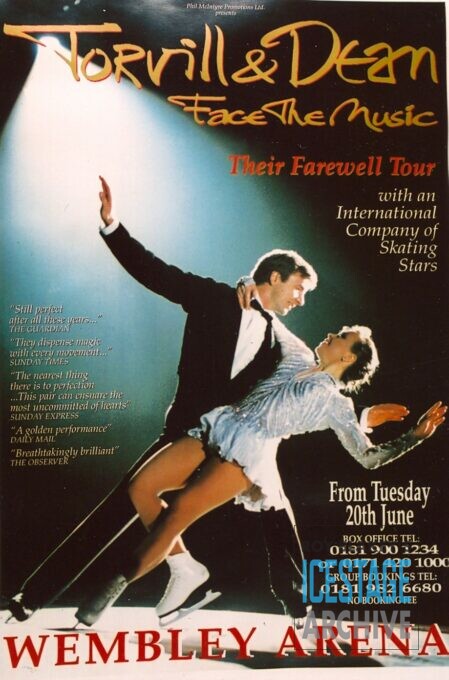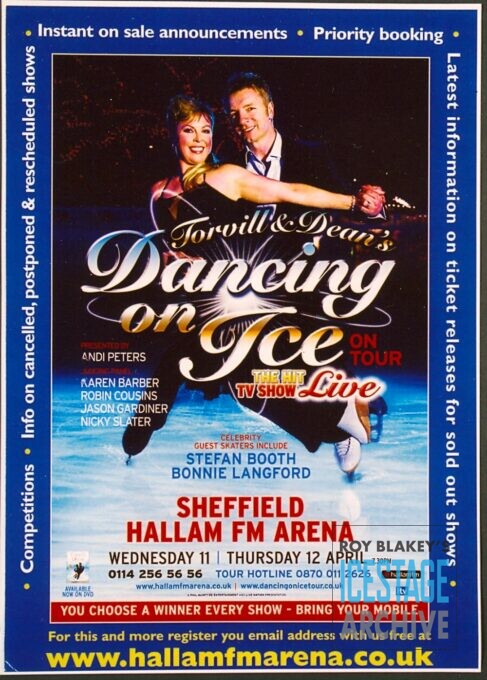When the Brits discovered that ice skating could be great theatre they really got cracking and put on some smashing ice shows. The first was “Arabian Nights” at Bournenouth’s Westover Ice Rink in 1932. It started a tradition there of annual new summer “Musical Plays on the Ice” which enjoyed great success for many years. In 1935 they imported dynamic American ice star Evelyn Chandler for the title role in “Rita The Spy,” an original ice musical that has to be the first Who-Dun-It on skates. Other venues such as Brighton’s Sports Stadium and theatres in Manchester and Nottingham soon jumped on the ice wagon.
Producer Claude Langdon’s 1936 Brighton blockbuster “Marina” is counted as a milestone in English theatrical history. Like those at Bournemouth the lavish production had a complex story line and an outstanding cast of international skating stars including Melitta Brunner, “Red” McCarthy, and Baron von Petersdorff (a real baron). It went on to great success in Manchester, London, and Blackpool.
In 1937 “Rhapsody On Ice” was presented on the stage of London’s Royal Opera House, Covent Garden, with Pierre Brunet & Andrée Joly, Phil Taylor, and 14-year-old Maria Belita (soon to shorten her name by fifty percent). Also, The Stoll Picture Theatre added a live ice ballet, “The Merry Doll,” to its regular showing of films—the same “Merry Doll” story that was historically created in Berlin and brought to New York’s Hippodrome Theatre in 1916.
The Blackpool Ice Drome was built in 1937 specifically for staging ice shows. From its grand opening with the imported “Marina” up to the present it has broken all records by creating an innovative and exciting new skating production every year. The 1952 production put such “Literary Frolics”—and authors—on ice as Treasure Island, A Midsummer Night’s Dream, Omar Kayyam, and Diary of Samuel Peyps. The large 1955 cast recreated the entire history of America’s “Deep South” on skates—everything from slavery to Mardi Gras revelry. Long-time producer and driving force Amanda Thompson carried on the tradition of her grandfather, founder Leonard Thompson. Very sadly, after surviving for over seventy years Blackpool’s venerable Ice Drome became a casualty of the world-wide economic slump and discontinued its shows at the end of the 2008 season.
After a disappointing hiatus in 2009, an exciting and innovative new “Hot Ice” production was staged in Blackpool in 2010, although with a shorter run than in previous years. Thankfully, annual productions were resumed in 2011.
Legendary producer Tom Arnold transformed the Stoll Theatre into London’s only ice theatre in the mid 1940s. Emulating New York’s Center Theatre, his series of four excellent productions during a five-year run included “Ice Cascades,” the first aqua-ice show, starring Carol Lynne, Romayne & Brent, Red McCarthy, and Heinie Brock. Mr. Arnold also began producing his summer “Ice Circus” series and other ice productions at Brighton’s Sports Stadium. Many of his shows traveled to other cities in the U.K., as well as Scandinavia, and occasionally the continent.
Meanwhile, Gerald Palmer was staging two lavish ice spectacles a year at London’s huge Wembley Arena. Among his highly successful offerings with glamorous American star Gloria Nord were “Sleeping Beauty On Ice,” “Chu Chin Chow On Ice,” and “The Dancing Years On Ice.” In 1953 Miss Nord made theatrical skating history as the first ice artist to perform in the annual Royal Variety Show Command Performance for Queen Elizabeth.
That same year the great British star Belita showed both her dancing and skating talents in the custom-tailored “Champagne On Ice” on stage at the London Hippodrome. In that production Belita, also a bona fide swimming star who had appeared opposite Johnny (Tarzan) Weissmuller in an aqua show, was “flown” by Foy behind a gauzy scrim simulating an underwater ballet. During the 1950s she was also regularly seen on much larger ice at Empress Hall, starring in such Claude Langdon productions as “Babes In The Woods,” “London Melody,” “Jack and the Beanstalk,” and “White Horse Inn.”
The beloved British pantomime stories remained immensely popular on ice during that era but producer Palmer at Wembley Arena also discovered the classics The Wizard of Oz, and “Ali Baba and the Forty Thieves” to be ripe for his own spectacular transformation into icy fantasies. His “Snow White and the Seven Dwarfs” and “Peter Pan” were perfect showcases for exciting French star Jacqueline du Bief.
In 1955 “Holiday On Ice” glided over from its European tour with such success that it has returned to the UK with a new edition each year. Blackpool titled its popular shows “Ice Parade” in the 1960s and 70s, then “Showtime On Ice,” and “Hot Ice” after 1984. Another perennial favorite, The Bournemouth ice shows became “Ice Follies” through the 1960s, ’70s, and ’80s.
It was raining gold on English skaters in the 1970s and 80s. John Curry triumphantly won Olympic gold in men’s figure skating in 1976 but shunned contract offers from traditional ice shows. Instead he fulfilled a long-held dream by forming his own dance-influenced skating company, training the skaters in his own classical style, and bringing his unique “Theatre of Skating” to the Cambridge Theatre in London in 1976, returning with “Theatre of Skating II” in 1977 at the London Palladium. In 1984, after performing all over the world, The John Curry Skating Company returned to London for historic performances at the prestigious Royal Albert Hall.
When Robin Cousins captured his Olympic gold for England in 1980 it was a totally different story. Robin eagerly embarked on his long show-biz career with the European “Holiday On Ice.” In 1983 he brought his own skating company, “Electric Ice,” to perform at London’s Victoria Palace Theatre. Like Curry, he too found performing success all around the world, and in 2000 made his farewell skating performance with “Holiday On Ice” at Brighton Center in his home country. Robin has concentrated on his many directing and choreographic activities since then, primarily for the “Holiday On Ice” company, with occasional performances on-the-boards in stage musicals such as The Rocky Horror Picture Show and Grease.
After the collapse of the Soviet Union, England welcomed two groups of Russian professional skaters, the Russian Ice Stars and The Russian All Stars, which each toured the U.K. The All Stars performed “Peter Pan On Ice” and “Barnum On Ice,” and the Ice Stars such classics as “Sleeping Beauty On Ice,” Cinderella On Ice,” and “Beauty and the Beast On Ice.” Wild Rose Productions entered the scene in 2000 with “Phantom of the Opera On Ice.”
The stunning artistry of Jayne Torvill and Christopher Dean’s 1984 competitive ice dancing performance to Boléro thrilled the world and brought them Olympic Gold. They made several world tours in their own productions at the end of the millennium, including the cities of their adoring English countrymen. “Face The Music” in the mid 1990s was touted as the Farewell Tour, but they returned again at the end of the 90s in “Ice Adventures.” In 2006 they produced, hosted, and performed short opening ice dances in an immensely popular television series, Dancing On Ice. In it other professional skaters coached non-skating celebrities on practice ice, and then partnered with them in weekly televised skating competitions to determine the best couple. The smash hit series has returned for three seasons on television and spun off successful tours of “Dancing On Ice” live competition performances in UK arenas.
